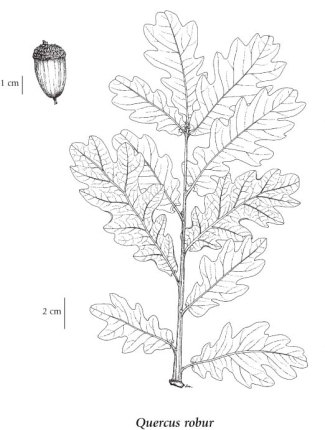English Oak is an introduced European species in North America, where it is widely cultivated. It is reported from several US states ((MA, ME, NH, NY, OH, PA, RI), and five Canadian provinces (BC, NB, NS, ON, PE) (
USDA 2010). While it is widely grown, it is naturalized only in Washington, New Brunswick and Nova Scotia (
Flora North America Online 2010). In British Columbia, it is also naturalized,and is frequently encountered in the southwestern corner of the province, where it persists in areas where acorns have been introduced as squirrel food, or where it has been planted. It is often encountered as seedlings or young saplings under a forest canopy in drier sites near urban areas, particularly in areas of peat soil. Wild plants have been collected by Lomer in Squamish and on Sumas Mountain and it is frequent in drier parts of the Lulu Island Bog in Richmond.
Taxonomically, this is a tree species of oak in the white oak group (Quercus section Quercus). It most closely resembles the eastern North America white oak (Quercus alba). In British Columbia, it resembles Garry oak (Quercus garryana), but may be separated based on leaf lobing, leaf petiole length, and acorns. It reaches heights of 30 m and has shallowly lobed leaves with leaf stalks 1-3 mm in length. Fruits (acorns) occur on long stalks.
